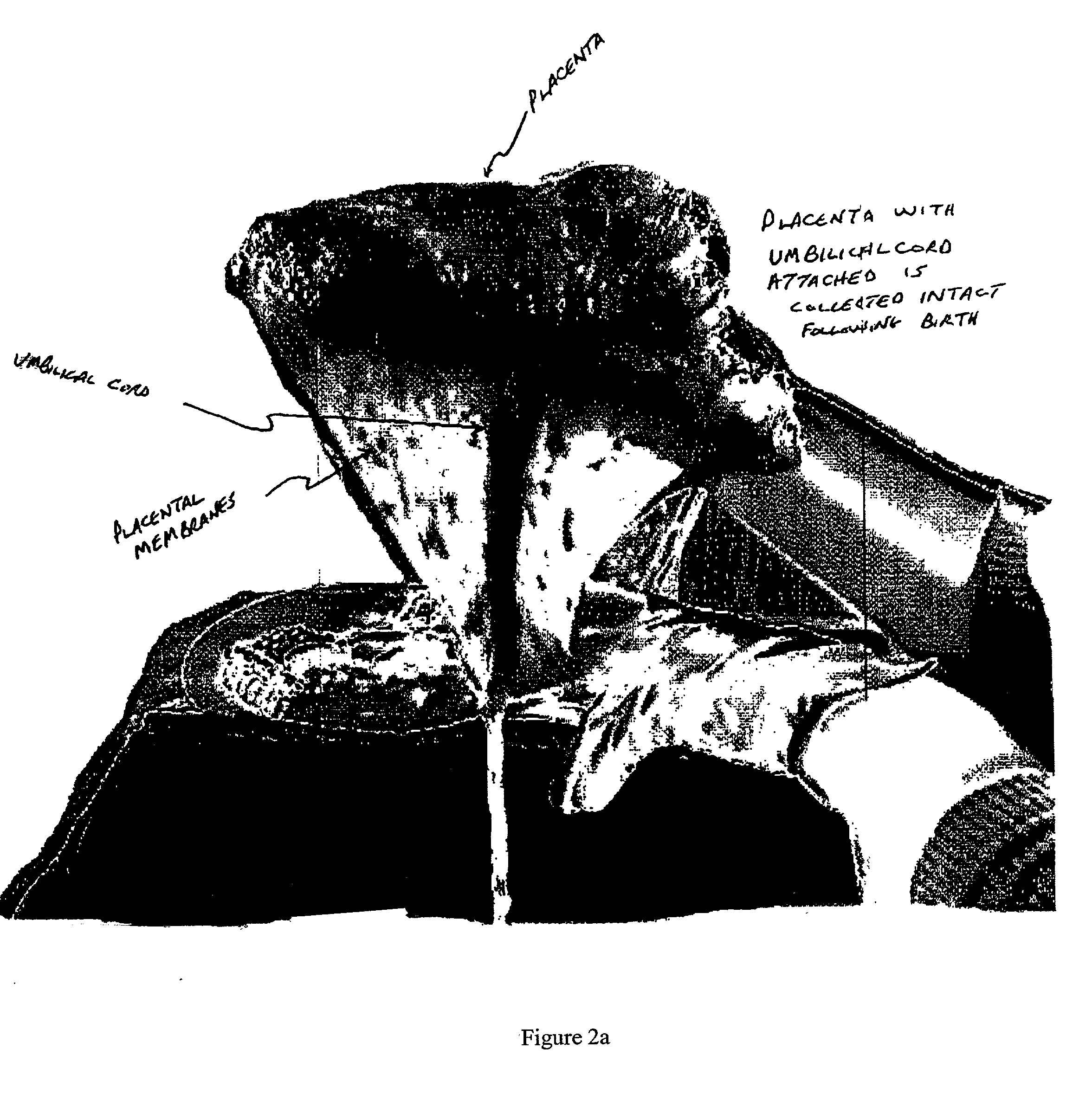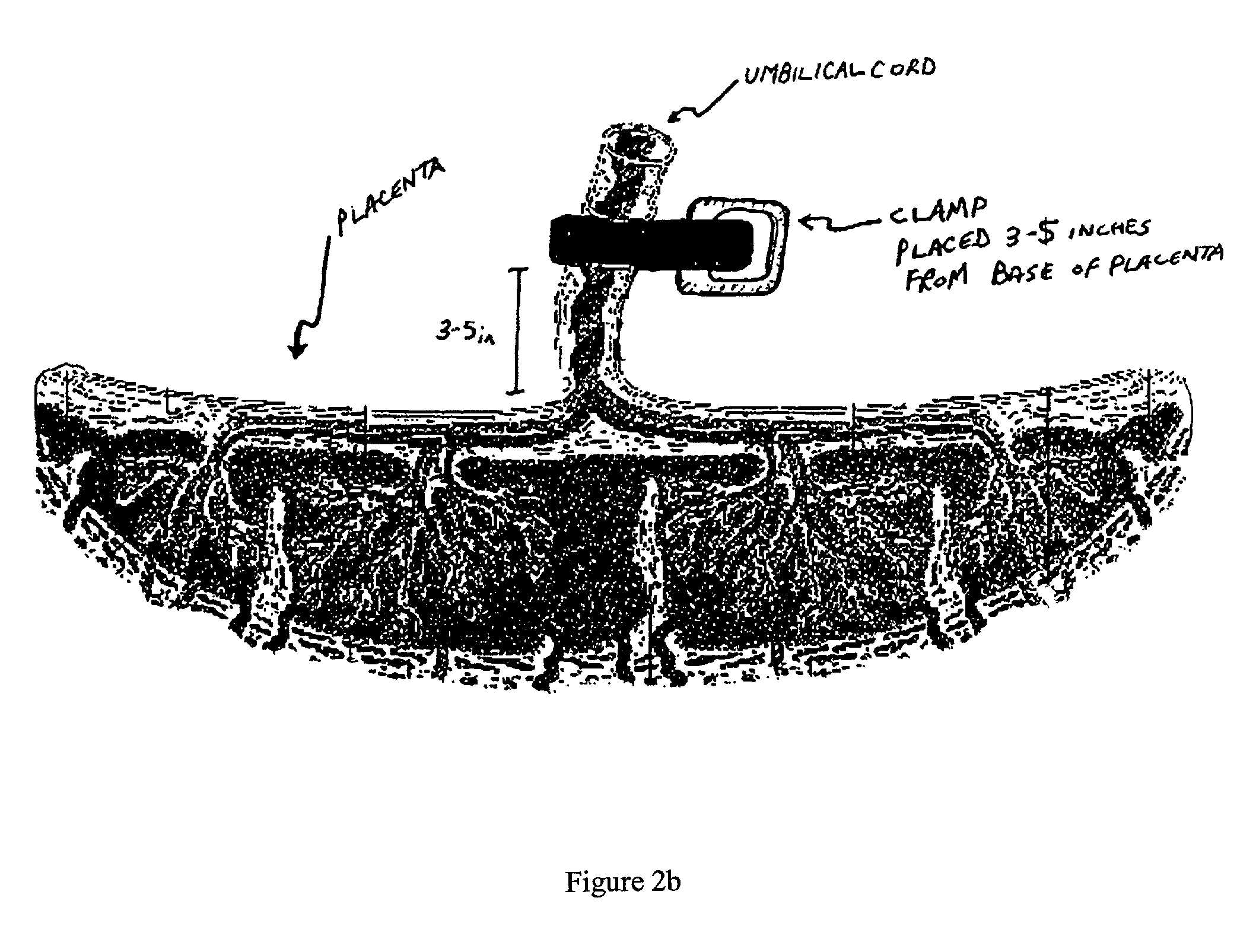Method of collecting placental stem cells
a placental stem cell and collection method technology, applied in the field of stem cell collection, can solve the problems of insufficient cell numbers to reconstitute bone marrow after transplantation, insufficient cell numbers for normally occurring stem cells in adult tissues, and inability to obtain sufficient human stem cells
- Summary
- Abstract
- Description
- Claims
- Application Information
AI Technical Summary
Benefits of technology
Problems solved by technology
Method used
Image
Examples
example 2
of Cells obtained by Perfusion and Incubation of Placenta.
[0038]
1 WBCTotal # of 1000 / ml Lym % MID % GRA % Volume Cells CB 10.5 43.2 8 48.8 60 ml 6.3 .times. 10.sup.8 (Cord Blood) PP 12.0 62.9 18.2 18.9 15 ml 1.8 .times. 10.sup.8 (Placenta perfusate, room temperature PP.sub.2 11.7 56.0 19.2 24.8 30 ml 3.5 .times. 10.sup.8 (Placenta perfusate, 37.degree. C.) Samples of PP were after Ficoll. Total cell number of PP after Ficoll is 5.3 .times. 10.sup.8 and number of CB before processing is 6.3 .times. 10.sup.8. Lym % is percent of lymphocytes; MID % is percent of midrange white blood cells; and GRA % is percent of granulocytes.
[0039] Cell isolation is achieved by using magnetic cell separation, such as for example, Auto Macs (Miltenyi). Preferably, CD 34.sup.+cell isolation is performed first.
PUM
| Property | Measurement | Unit |
|---|---|---|
| temperature | aaaaa | aaaaa |
| temperature | aaaaa | aaaaa |
| temperature | aaaaa | aaaaa |
Abstract
Description
Claims
Application Information
 Login to View More
Login to View More - R&D
- Intellectual Property
- Life Sciences
- Materials
- Tech Scout
- Unparalleled Data Quality
- Higher Quality Content
- 60% Fewer Hallucinations
Browse by: Latest US Patents, China's latest patents, Technical Efficacy Thesaurus, Application Domain, Technology Topic, Popular Technical Reports.
© 2025 PatSnap. All rights reserved.Legal|Privacy policy|Modern Slavery Act Transparency Statement|Sitemap|About US| Contact US: help@patsnap.com



